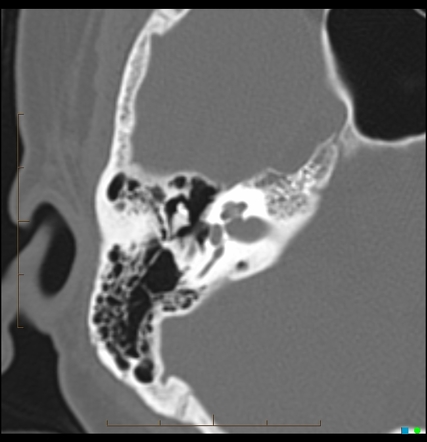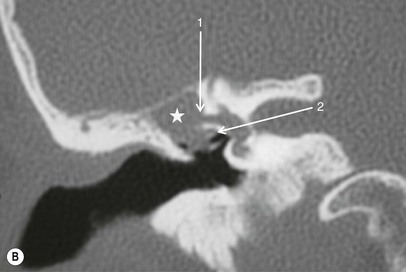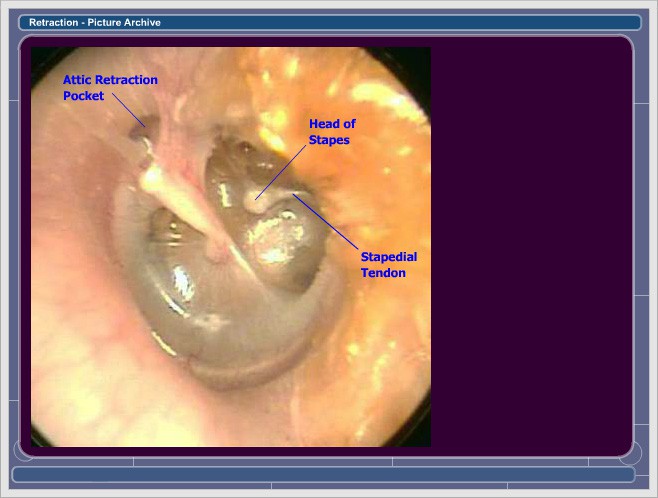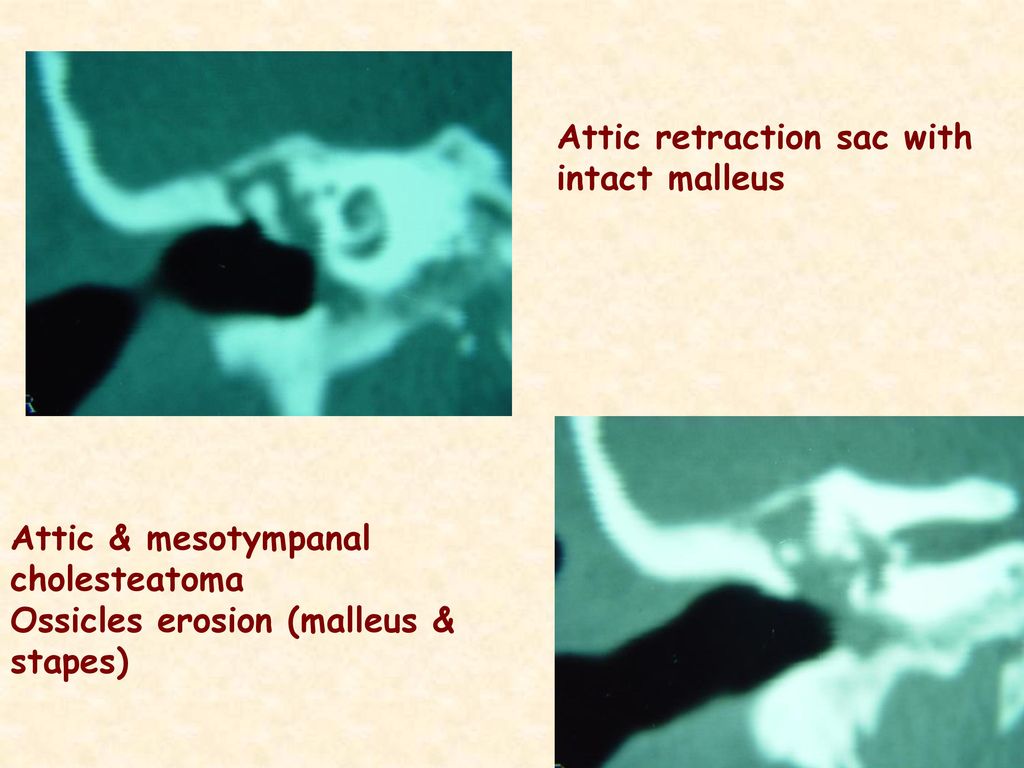Download citation a tiny retraction of the pars flaccida may conceal an attic cholesteatoma objective the purpose of this study was to evaluate the possibility of attic cholesteatomas.
Attic retraction ct.
To examine this theory computerized tomographic ct findings of these conditions were.
Eustachian tube theory.
Tympanic membrane retraction usually occurs when a portion of the tympanic membrane becomes weakened and is pulled inwards by the negative pressure within the middle ear.
Attic retractions must be followed closely using endoscopy microscopy and temporal bone computed tomography even though the patient has a tiny retraction of the pars flaccida or a normal hearing level.
An auto atticotomy also called nature s atticotomy refers to an enlarged lateral attic with absence of the scutum and lower lateral wall of the attic in a patient without a history of surgery.
The appearances on ct scans of chronic otomastoiditis tympanosclerosis cholesterol granuloma attic retraction pocket and acquired cholesteatoma are reviewed and illustrated.
The pertinent anatomy is described and the role of the tympanic diaphragm and isthmus in determining the degree to which middle ear disease may progress is stressed.
To examine this theory computerized tomographic ct findings of these conditions were evaluated in a series of 53 ears with retractions of the pars flaccida attic retractions of tos type ii or deeper including both retraction pockets and cholesteatomas.
Attic and the adjacent middle ear spaces and that subsequent building up of the negative pressure in these spaces results in retraction of the pars flaccida leading to formation of attic retraction pockets and cholesteatomas.
Management of controlled posterior or posterior attic retraction pockets.
Revision surgery is performed in cases of functional failure residual cholesteatoma suspected on follow up ct scan or mri and recurrent cholesteatoma.
1 3 this entity results from a deep retraction pocket or a cholesteatoma that has eroded the bone and then spontaneously drained into the external auditory canal.
The rate of attic cholesteatomas occurring behind a tiny retraction of the pars flaccida was 7 7 11 of 142 patients with attic cholesteatoma.
Cholesteatomas appear as regions of soft tissue attenuation exerting mass effect and resulting in bony erosion.
Invagination of the tympanic membrane of the attic to form retraction pockets to be filled with desquamated epithelium and keratin to form cholesteatoma.
This is the most common and widely considered as the main reason for cholesteatoma.
As the tympanic membrane is pulled inwards medially it can become draped over the ossicles resulting in a variety of symptoms.



















